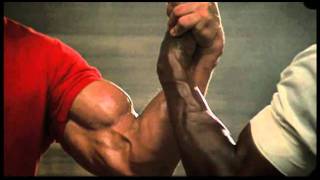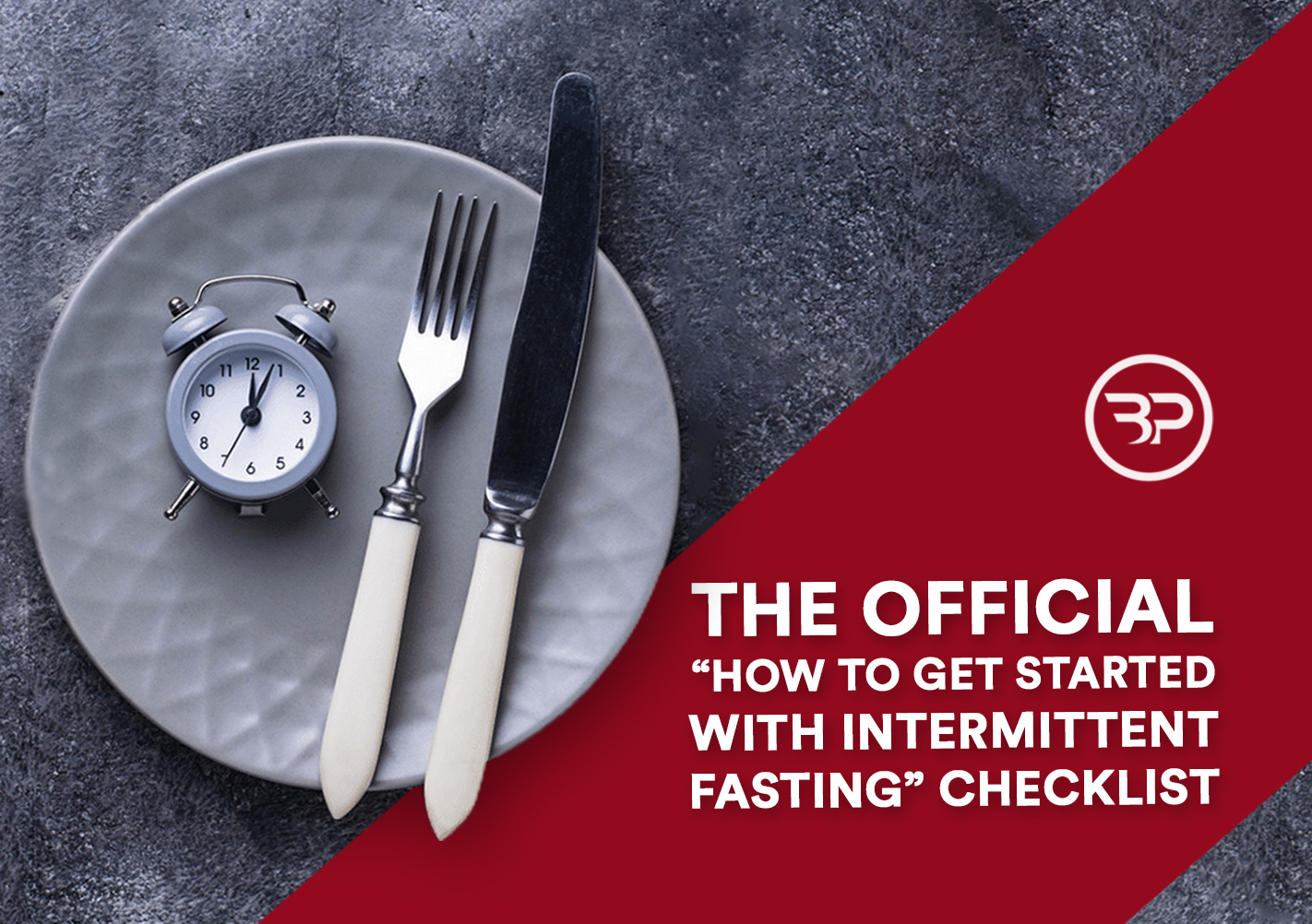High Frequency Training for Bigger Arms in Six Weeks
January 27, 2015
Key Points:
- Total body High-Frequency Training gets you the fastest results in the shortest time.
- After years of training, results become harder to come by– to see rapid results you need a focused approach.
- All the volume in the world doesn’t mean jack-shit if you don’t apply tension to the muscles—pursue strength and total body movement.
- Decrease training on non-focus muscles to maximize recovery of your arms.
- Don’t specialize too long unless you’re interested in being weak, puny, and un-athletic.
I overheard a conversation the other day that went along the lines of “I don’t care if I build big arms, I just want to be “functional.”
Huh?
Seriously?
What the hell does that even mean?
Functional of a training program is determined by your goals.
If being jacked is the goal then a massive set of pythons is as functional as it gets.
Say goodbye to your toothpick arms, it’s time to build thick guns that are both show and go.
There are tons of “specialization” programs around, but most share a common flaw–they abandon high-performance training.
Even worse, most trainees specialize before they’re strong enough to benefit; neglect major exercises like squats and deadlifts for 12lb cheat curls, setting themselves up for perpetual disappointment and no more muscle to show for their efforts.
As a result, overzealous lifters with poorly constructed programs never actually get stronger and thus, never get bigger. By neglecting performance they leave huge gaps in training, ignore strength, and never build a foundation to build muscle.
Then, these same dudes focus on specialized programs too long, leaving them weak, puny, and un-athletic.
You’re better than that.
If you put in the work, you’ll have your cake and eat it too–a body that performs and looks like an athletic bad-ass.
Once the foundation is built short-window specialization adds the finishing touches to build big arms. That’s accomplished with this plan–a total body routine with focused isolation work to pound your arms into growth.
Why Specialization?
Let me know if this sounds familiar: After years of training, rapid gains become difficult to come by.
You’re pissed, impatient, and want results yesterday.
You keep getting stronger, but the journey only yields a few measly of muscle… if you’re lucky.
Over time, this builds a great physique, but when you’re short on patience you need a different approach.
This is where specialization comes in; instead of throwing a set of hammer curls at the end of your routine use a short, intensive approach to shock the body into growth.
This method has been popularized by Christian Thibaudeau and my man John Romaniello and tested by thousands: Periods of six to eight weeks of focused destruction bring up lagging body parts faster than the “slow and steady” approach.
How Specialization Works
You’re “strong like bull” from your squats, pull-ups, presses, and deadlifts. Hell, you’ll even develop some hops, speed, and athleticism outside of the gym.
This is great, but solely training for sport and strength leaves gaps in your “show” muscles.
You want to look good and play good; it’s time you get both with focused assistance work to stimulate hypertrophy.
- Training volume decreases in non-specialized muscles.
- Continue to train strength and movement to prevent drops in strength and athleticism.
- Increase in training volume to target muscles for focused growth for set period of time (6-8 weeks).
- Decrease in training volume after the specialization to allow of super compensation and full recovery.
The body only has a select reserve of recovery resources—you can’t specialize in your arms and train for a marathon, it won’t work.
By targeting exercises and increasing volume on exercises that emphasize the arms while reducing volume in other exercises you’ll target recovery resources to the area most in need—your arms.
Training Splits
All the volume in the world doesn’t mean jack-shit if you don’t surpass the bodies minimal essential strain (MES), induce an anabolic response and apply tension to force your muscles to grow.
Nothing accomplishes these tasks better than total body movements.
I’m talkin’ squats, hinges, sprints, presses, pulls, lunges, and carries. These exercises make up the brunt of well-designed weight training programs, specialized or not.
Design Your Workout with the Following Components
Movement Training
Everyone’s an athlete, and athletes move. Spend some time doing low volume sprints, hill sprints, stairs, and/or change of direction work after your dynamic warm-up or with 10 minutes of conditioning twice per week.
A little bit goes a long way to not looking like a goon outside the gym.
Explosive Exercises
Explosive exercises like jumps, throws, and push-ups jump-start workouts to increase neural activation, improve explosiveness, and maximize muscle fiber recruitment for later exercises.
Compound Exercises
Compound exercises provide the backbone for your strength foundation. To emphasize greater growth in the arms my favorite lifts are as follows:

- Squats: Front squats, back squats, box squats, and Goblet squats
- Hinges: deadlifts, snatch grip deadlifts, RDL’s, Kettlebell swings with these bad-ass bells
- Press: Floor press, pin press, push press, close grip bench press, single arm press, dumbbell bench press variations
- Pull: Supinated bent-over row, dumbbell rows, inverted rows, neutral grip pull-ups, chin-ups, rope climbs
- Lunge: lunges, split squats, Bulgarian split squats
- Carry: waiter walks, farmer carries, single arm carries, overhead carries
Isolation Exercises
Face it; you have a closet bodybuilder inside of you. Feed the beast with a diet of biceps and triceps isolation. At least two exercises per workout are necessary. Emphasize, “feeling” the muscle do the work to create muscular and metabolic damage to stimulate muscle growth.
Unilateral Exercises
Unilateral exercises prevent imbalances from stalling your training, injuries from manifesting, and achieve greater activation of motor units. Greater muscular recruitment and balance will yield better gains.
Volume, Frequency, Intensity, and Progression
To get stronger, more athletic, and jacked you need to train more often. Training frequency, whether you’re an athlete training or adding mass, is one of the most important factors to getting the fastest results possible.
Related: High-Frequency Training: Your Strength Building Solution
Ideally, you’ll train arms every training session. To optimize your training for muscle growth total volume and frequency are kept high while volume during each session is kept in check. Too much volume in one workout will overshoot your recovery and trash your next workouts, don’t be too aggressive.
Varying Intensity
While you’ll be adding slabs of meat onto your humeri there’s also a major emphasis on total body strength development.
To minimize gaps in strength and hypertrophy you’ll perform sets of 1-15 reps at varying intensities. Strength movements are trained early in each workout to emphasize continual strength gains.
Progression
Progression is simple—progressive overload on your strength exercises each week of the program.
Don’t go wild on every set of the day or you’ll overshoot your ability to recover.
Remember, the increase in training frequency for your muscles will be plenty to stimulate growth.
Training Schedule
best training days on this program are Monday, Tuesday, Thursday, Saturday Or Monday, Wednesday, Thursday, and Saturday.
This allows time for full recovery of muscles between workouts since you won’t be going berserk on lower body training.
Overall, this schedule maximizes recovery to boost muscle growth.
Get the High-Frequency Training Workout
Consistently get stronger in all your lifts for the next 4-8 weeks to stretch your shirtsleeves.
Once you finish the program drop all isolation work on the arms.
All. Of. It.
Even the curls.
The goal is recovery and allowing the hard work of the last few weeks manifest into additional hypertrophy, neglecting this WILL trash your results.
If you choose eight weeks, wait at least a month before starting a specialization program on the arms again. Then, re-engage a full assault on the arms for additional muscle growth.
Final Thoughts
Once the foundation is built short-window specialization adds the finishing touches. This isn’t time to abandon a total body training style to focus on one measly body part—you can still make massive gains with some focused specialization. Train with specialization for six to eight weeks at a shot, then back things off for rapid arm growth—this is the most effective way to build big arms.
Looking for a simple yet effective way to build muscle? Download your Chiseled Muscle Cheatsheet below.









[…] High Frequency Training for Bigger Arms in Six Weeks — Eric Bach […]
[…] High Frequency Training for Bigger Arms in Six Weeks … – High frequency training is the key to building big arms fast. Here’s How its done with a Free six-week specialization workout for you. […]